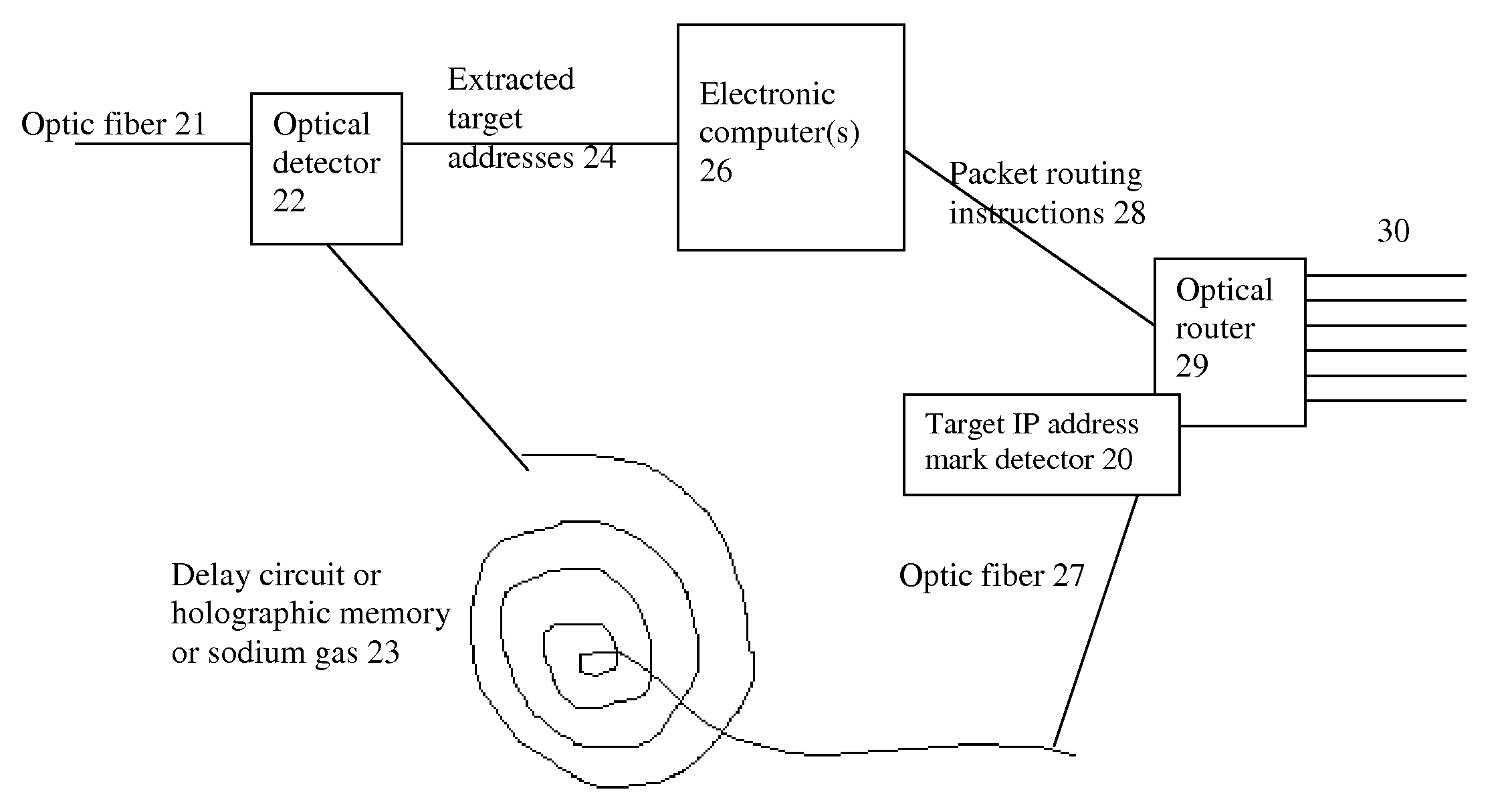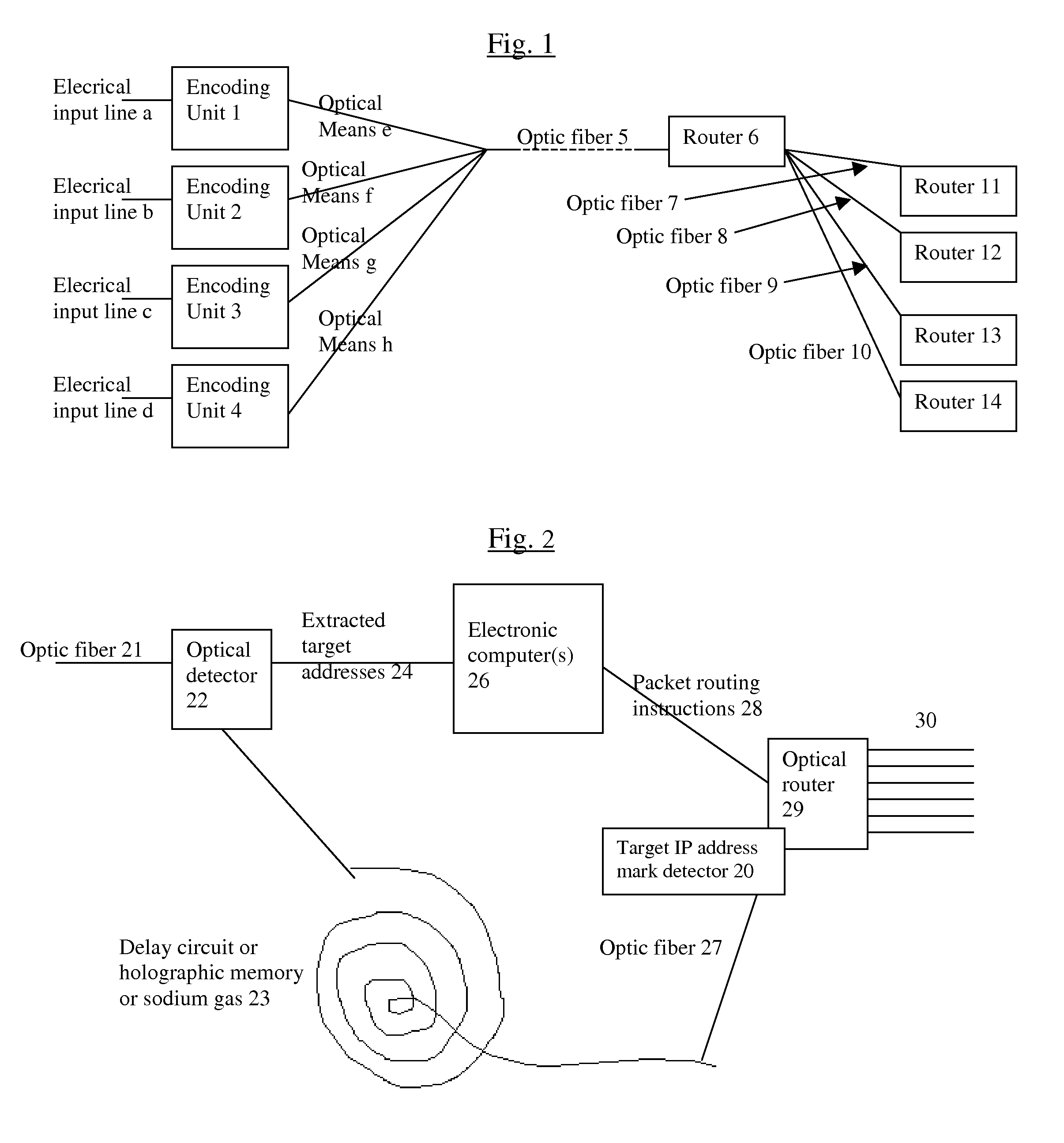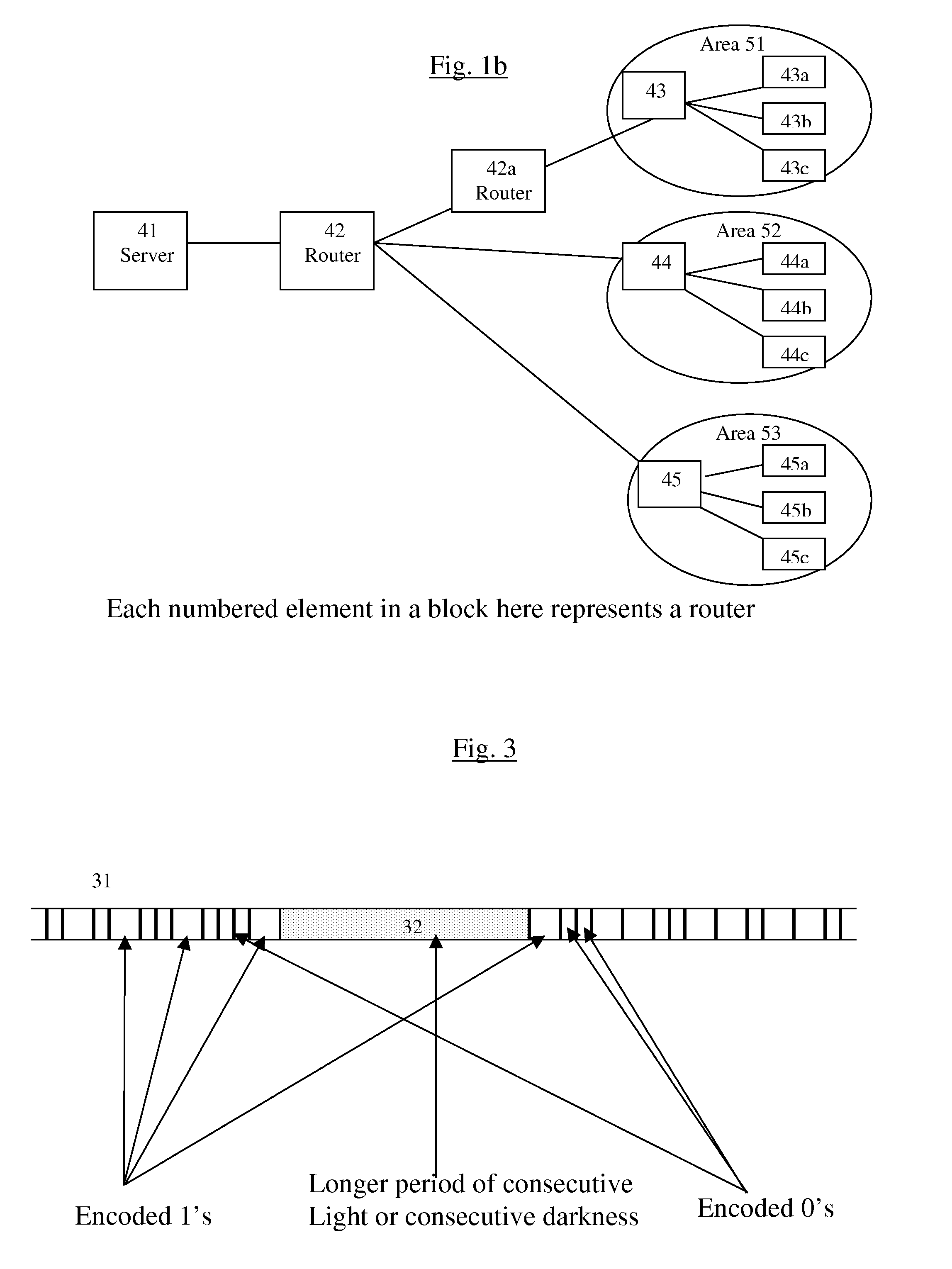System and method for improving the efficiency of routers on the Internet and/or cellular networks and/or other networks and alleviating bottlenecks and overloads on the network
a router and network efficiency technology, applied in the field of router optimization on the internet, can solve the problems of crude response time of optical switches and less efficient, and achieve the effects of convenient and cheaper buffering, convenient and convenient use, and efficient operation
- Summary
- Abstract
- Description
- Claims
- Application Information
AI Technical Summary
Benefits of technology
Problems solved by technology
Method used
Image
Examples
Embodiment Construction
[0031]All of the descriptions in this and other sections are intended to be illustrative examples and not limiting.
[0032]Referring to FIG. 1, we are assuming for the simplicity and clarity of the example, that there are only 4 lambdas carried simultaneously by the optic fiber. So there are 4 units (marked 1-4) that encode electrical bits from electrical input lines (marked a-d) respectively into the light bits of each lambda, and while encoding them, these units preferably find the target address of each data packet and / or the beginning of the packet header and mark them with an optically obtrusive mark, or mark the entire header, so that the computer that makes the packet switching decisions will get the entire header. Preferably the target address is very close to the beginning of the packet and at a constant distance from it, so only one mark is needed for each packet. Most preferably the target address would be the first thing at the beginning of the header. Unfortunately, accor...
PUM
 Login to View More
Login to View More Abstract
Description
Claims
Application Information
 Login to View More
Login to View More - R&D
- Intellectual Property
- Life Sciences
- Materials
- Tech Scout
- Unparalleled Data Quality
- Higher Quality Content
- 60% Fewer Hallucinations
Browse by: Latest US Patents, China's latest patents, Technical Efficacy Thesaurus, Application Domain, Technology Topic, Popular Technical Reports.
© 2025 PatSnap. All rights reserved.Legal|Privacy policy|Modern Slavery Act Transparency Statement|Sitemap|About US| Contact US: help@patsnap.com



